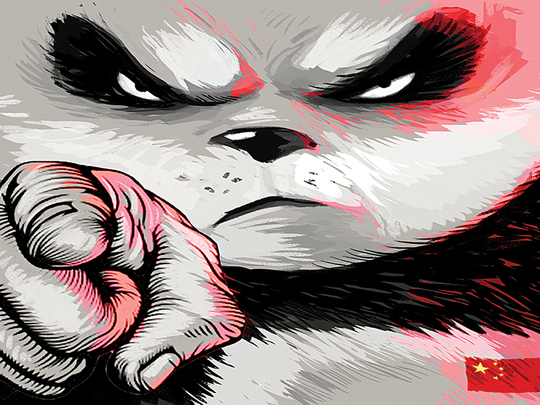
Remember the “Nippon Peril” which Western politicians frequently referred to, not without a mix of envy, arrogance and disparagement, when they talked in the 1960s about the rising economic power of Japan from the atomic ashes of Hiroshima and Nagasaki challenging the economic dominance of the USA and Western Europe? That was then - in the 1960s - when Japan was taking off as a rising economic power which, in the eyes of some cynics, was “an economic giant but a political dwarf”. If people talked then about Asia, they were, invariably, referring to Japan.
Since those heady days of Japan’s post-war economic rise, we have in recent times witnessed the phenomenal rise of China which, flexing its economic biceps, is also increasingly challenging the USA, the world’s sole surviving superpower. Indeed, as was once the case with Japan, China has today become a synonym for Asia.
True, one can hardly ignore China when talking about Asia. China not only has huge trade volumes with almost all the major trading countries of the world but it is also becoming an important investor in many countries. This heavily trade-tilted relationship has made China a crucial partner for many countries in the world, which can ill afford to disturb this delicately poised relationship despite the risks inherent in this asymmetry. Indeed, many of China’s trading partners are not comfortable because China is using, in subtle and not so subtle ways, its economic dominance to dictate its will on its partners.
Unlike Japan, which operated within rigidly-drawn parameters that precluded any post-war militarism, China does not face such constraints and is steadfastly building up its militaristic character.
But it is wrong to identify one particular country with an entire continent. Japan, China or, for that matter, India, the other rising power with a 4000 year old ancient civilisation, are parts of Asia and not exclusively Asia itself. Indeed, it would be a fallacy to ignore one for the other, and identify one single country as a giant entity called Asia.
The former Australian Prime Minister Kevin Rudd, who was recently appointed president of the New York-based Asia Society Policy Institute, a think tank that calls itself the “voice” for Asia in America, told me during a recent breakfast meeting that Asia was “more than just China”.
Rudd, a highly-respected scholar on China with a mastery of Mandarin, likes to talk about present-day China’s strategy of a “new type of great power relationship”, indicating that Beijing sought no conflict, no confrontation but mutual respect, all of which would lead to a “win-win” approach to mutual cooperation. Rudd argues that China, as an emerging power, was not trying to challenge the USA and that it would avoid the so-called “Thucydides trap” which was history’s most dangerous period when one rising power would challenge the existing position of established powers.
While acknowledging China’s strong position in world affairs, Rudd added that he also sighted other rising countries that contributed to the diversity and richness of Asia.
China’s neighbours are deeply worried over its disconcerting conduct in a number of regions – ranging from the East and South China Seas through Taiwan, Tibet and Hong Kong to the northeastern borders of India – that suggest that China has ambitions of converting its economic strength into military supremacy. China’s belligerent posturing in these regions is hardly reassuring to those that share borders with it or are located within its close geographical proximity.
Asia’s power equation will be further complicated with the rising economic force of the 10-member group of the Association of Southeast Asian Nations (Asean), which is moving up the integration ladder with the projected formation of the Asean Economic Community (AEC) by end 2015.
The AEC will assert its own economic importance in Asia, providing diversity with the unique mosaic of cultures of its own member states.
Will globalization, which has made countries dependent on each other – be it for markets, for resources or what have you – and kept the conflict potential at bay, win the day? Will each trading partner be pragmatic enough to recognize and accept its dependence on the other? That is the mantra to future peaceful coexistence, provided one jettisons the temptation to identify one single country as an entire continent.
Asia is not China, Japan, India or any other country; it is a mosaic of several cultures that can and should complement each other, and not create divisive fissures within the great continent.
China would do well to bear in mind that its big-power ambition should not be translated into belligerence against its smaller neighbours; this would only provoke them to form regional military alliances, with the inevitability of an unprecedented arms race surpassing even the Cold War in which the Soviet Union and its satellites were pitted against the equally formidable North Atlantic Treaty Organisation (Nato).
China needs to respect the territorial sovereignty and integrity of its smaller neighbours. The alternative to this can only be drifting towards conflict and war which can equally harm China’s interests and bring to naught all that it has achieved in terms of economic development and prosperity.
Manik Mehta is a commentator on Asian affairs.









